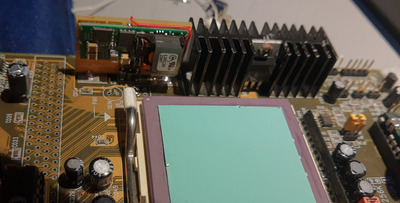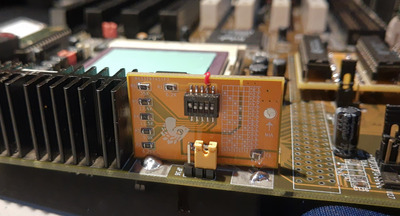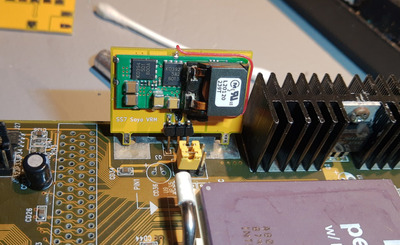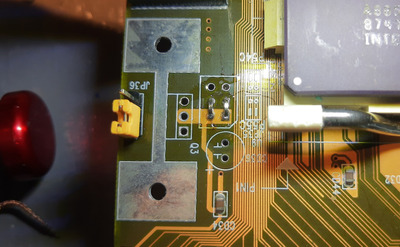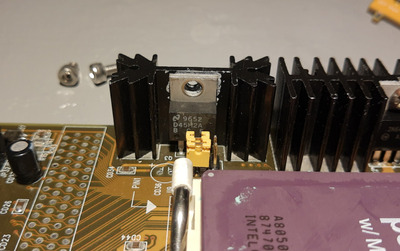Reply 220 of 240, by CalamityLime
- Rank
- Member
Hello there!
So the installation didn't go great.
The legs of the PCB were too far apart so I cut the legs off and tombstoned the PCB to the pad under the original heatsink.
Other than that, things went smoothly.
I removed a jumper block from the front of the PCB and replaced it with hard jumpers so the CPU vcore is powered from the murata and only the murata now. I added JP36 which changes the input voltage between 5v from the PSU and 3.3v from the CPU io VRM module. Currently it is now set to 5v.
The board does fit decently well and the dip switch is easily available.
Using the Pentium MMX cpu and setting the murata to 2.8V with dip 1, I booted the PC expecting the worst but it posted and booted!
Huzzah, it works.
As a fun test I kept air flow away from the large IO VRM heatsink that would get so hot it was very uncomfortable to touch before and after 20 mins of sitting idle, the heatsink was just slightly warmer than the PC case itself.
So that means less energy being dumped off as heat.
This post is a bit all over the place I know but this is still initial thoughts. I'll probably structure this information in a future post when I try the super socket 7 k6 cpu on the mobo.
Wish me luck!
-Lime.
Be Happy, it's only going to get worse.
- Projects
Limes Strange 3D models
USB-2-232
